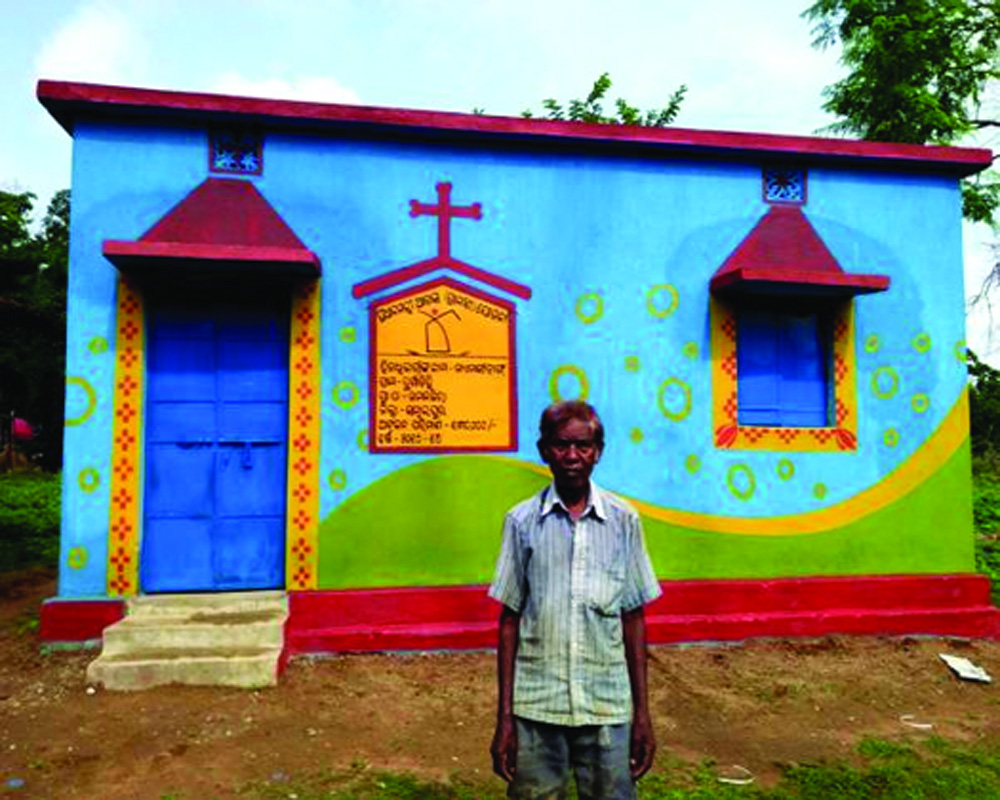PMAY-G has transformed rural housing in India, delivering not just shelter but also dignity and opportunity to millions
Housing is a fundamental challenge for rural India, where a significant portion of households live in kutcha structures made of non-durable materials such as mud and bamboo. These homes are highly vulnerable to harsh weather conditions, exposing residents to risks and uncertainties. Recognising this, the Indian government launched the ‘Pradhan Mantri Awaas Yojana-Gramin (PMAY-G)’ as part of its commitment to achieving “Housing for All.”
This ambitious welfare program aims to provide financial and construction assistance to build durable ‘pucca’ houses equipped with essential amenities. The scheme targets both houseless households and those residing in ‘kutcha’ or dilapidated structures. As of October 2024, PMAY-G has facilitated the construction of 2.67 crore houses, marking a significant milestone in its progress. However, this raises critical questions: Will this initiative truly ensure housing for all? How effectively does it address rural India’s housing challenges?
Leveraging Technology for Quality and Oversight
A cornerstone of PMAY-G’s success lies in its use of technology to enhance construction quality and ensure transparency in disbursal. One notable component is the ‘Rural Mason Training (RMT) Program’, developed in collaboration with the National Skill Development Corporation. The programme has trained 2.81 lakh masons, equipping them with the skills to deliver high-quality construction while fostering local expertise.
This initiative not only improves housing quality but also accelerates construction. For instance, over 40 lakh houses were built in 2021-22, with the number surpassing 50 lakh in 2022-23, breaking all previous records. Further, the program prioritises disaster-resilient designs, supported by tools like the ‘Pahal Compendium’. This resource offers diverse, region-specific house designs incorporating disaster-resilient features. Complementing the compendium is an app that provides 3D visualisations of recommended house designs, ensuring practicality and accessibility.
Transformative Impact on Beneficiaries
PMAY-G’s impact extends beyond physical housing. Recent research highlights its role in improving living conditions, access to infrastructure, and overall wellbeing. Beneficiaries have reported enhanced social status, self-esteem, and a sense of belonging—factors that potentially reduce distress migration. A key feature of the programme is its focus on marginalised groups, promoting transparency and ensuring female co-ownership, thereby empowering women.
The initiative has also significantly contributed to rural employment. Each house constructed under PMAY-G generates approximately 314 person-days of work, distributed among skilled (81 days), semi-skilled (71 days), and unskilled (164 days) labour. This employment impact is further amplified by integration with the ‘Mahatma Gandhi National Rural Employment Guarantee Scheme (MGNREGS)’. The quality of training under the RMT programme is evident, with certified masons even securing overseas employment opportunities. Such achievements underscore PMAY-G’s dual focus on immediate housing needs and long-term skill development.
Comprehensive Programme Integration
One of PMAY-G’s standout features is its integration with other government schemes to improve beneficiaries’ overall quality of life. This includes:
- Toilets through ‘Swachh Bharat Mission (SBM)’
- LPG connections via ‘Pradhan Mantri Ujjwala Yojana (PMUY)’
Ensuring Transparency and Fairness
Transparency in beneficiary selection is another critical strength of PMAY-G. Beneficiaries are identified using the ‘Socio-Economic and Caste Census (SECC) 2011’ and ‘Awaas+ 2018’ lists, verified through Gram Sabhas and an appellate process. The program also uses the ‘Awaas+2024 Mobile App’, which enables households to self-survey and update their housing status. Recently, facial recognition systems were introduced to further improve oversight, ensuring fairness and reducing fraudulent claims.
Global Scale and Ambitions: PMAY-G Despite its notable success, PMAY-G faces several challenges that need attention. A significant issue is the lack of awareness among many eligible beneficiaries, particularly in remote areas, about the programme’s eligibility criteria, highlighting the need for better information dissemination. Additionally, the program would benefit from stronger feedback mechanisms to address potential blind spots and improve implementation efficiency. Another concern is the uneven progress across states, with some exceeding their targets while others fall behind. Achieving balanced implementation will require greater political consensus and more equitable resource allocation.
(The writer is faculty, IIM Ahmedabad; views are personal)


























